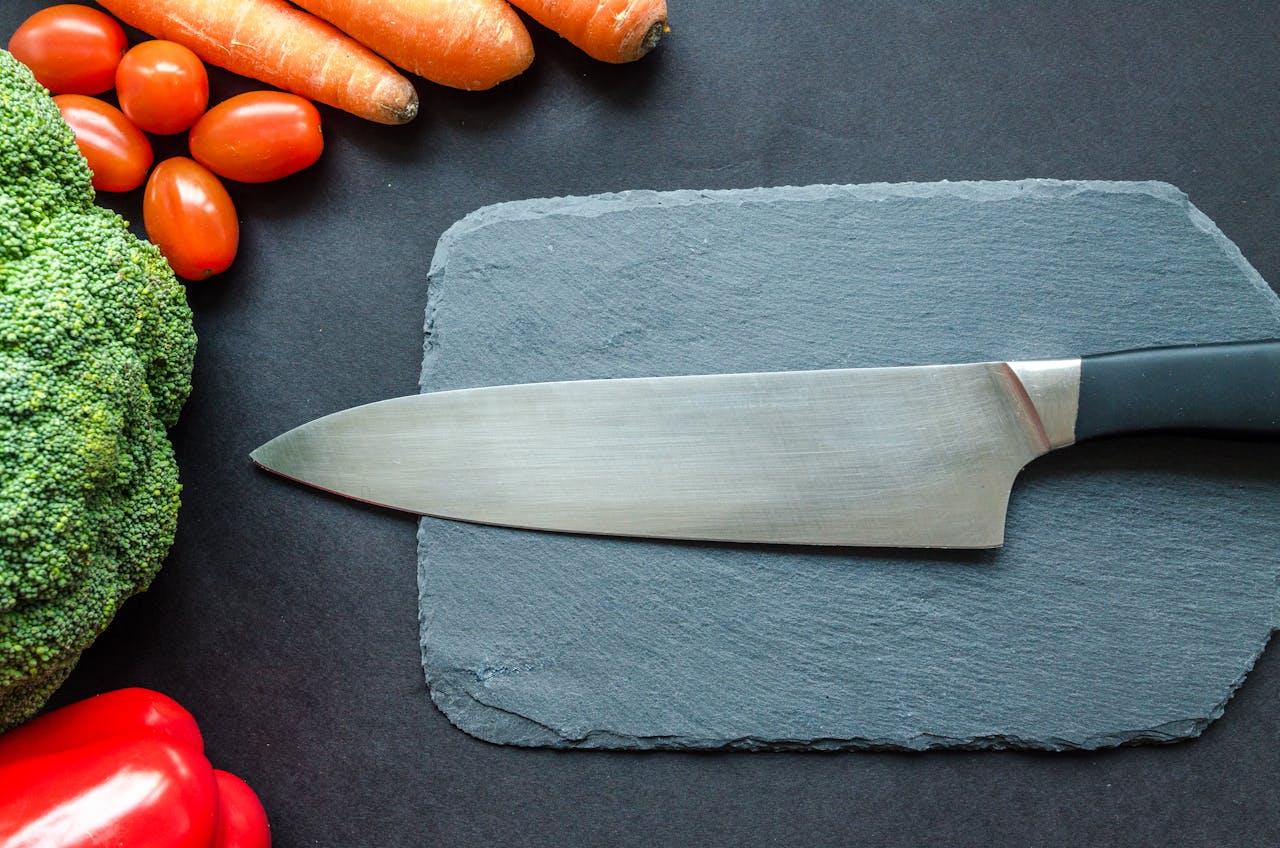Essential Knife Skills Every Home Cook Should Master
Mastering knife skills is fundamental for any home cook, not only to ensure safety in the kitchen but also to enhance efficiency and precision in food preparation. Understanding and practicing these essential knife skills will significantly improve your cooking experience and the quality of your dishes. Here are the key knife skills every home cook should master:


Choosing the Right Knife
- Chef's Knife: Versatile and essential for most tasks, including chopping, slicing, and dicing.
- Paring Knife: Ideal for peeling, trimming, and intricate work.
- Serrated Knife: Best for slicing bread, tomatoes, and other soft or crusty foods.
- Utility Knife: A smaller, all-purpose knife useful for everyday tasks.
- Maintaining Your Knives
- Sharpening: Regularly sharpen your knives using a whetstone or honing rod to maintain a sharp edge.
- Storage: Store knives in a knife block, magnetic strip, or protective sleeve to keep the blades in good condition and prevent accidents.
Basic Knife Grips
The Pinch Grip: Hold the blade of the knife between your thumb and index finger, pinching just above the handle. Wrap your remaining fingers around the handle. This grip provides better control and stability.
The Handle Grip: Hold the handle of the knife with all your fingers wrapped around it. This grip is less stable than the pinch grip but may be more comfortable for beginners or when performing less precise cuts.
Knife Safety
Proper Cutting Board: Use a sturdy, non-slip cutting board. Wooden or plastic boards are ideal, as they are gentle on your knives and provide a stable surface.
Keeping Fingers Safe: Use the "claw grip" with your non-dominant hand, tucking your fingertips under and using your knuckles as a guide for the knife. This grip helps prevent accidental cuts.
Knife Care: Always cut away from your body and keep your knives clean and dry to prevent slippage. Handle knives with care to avoid injuries.
Basic Cutting Techniques
Chopping: For chopping vegetables or herbs, use a rocking motion with your chef's knife. Keep the tip of the knife on the board and pivot the blade up and down, ensuring consistent sizes for even cooking.
Slicing: Use a smooth, gliding motion to slice meats, fruits, or vegetables. For uniform slices, maintain even pressure and control throughout the cut.
Dicing: Start by slicing the ingredient into even strips. Then, rotate the strips 90 degrees and slice again to create uniform cubes. This technique is essential for recipes requiring diced onions, tomatoes, or potatoes.
Mincing: Mincing is ideal for garlic, herbs, or other small ingredients. Use a rocking motion with the knife, moving it back and forth rapidly while keeping the tip anchored to the board.
Julienne: Cut the ingredient into thin, even slices, then stack the slices and cut them into matchstick-sized strips. This technique is often used for vegetables in salads or stir-fries.
Chiffonade: Used for leafy greens or herbs, chiffonade involves stacking leaves, rolling them tightly, and slicing them into thin ribbons. This technique is perfect for garnishes or incorporating herbs into dishes.
Advanced Techniques
Boning: Using a boning knife, remove bones from meat or fish. This technique requires precision and control to avoid wasting meat.
Filleting: Filleting fish involves removing the skin and bones, leaving a clean, boneless piece of fish. A flexible fillet knife is ideal for this task.
Carving: Carving large roasts or poultry involves making smooth, even slices. Use a carving knife or a slicing knife, and carve against the grain for tender cuts.
Practice and Patience
Consistency is Key: Consistent practice is essential for mastering knife skills. Start with basic techniques and gradually progress to more advanced methods as your confidence grows.
Take Your Time: Rushing can lead to accidents and uneven cuts. Focus on maintaining control and precision, taking your time to ensure safe and effective knife work.
Learn from the Pros: Watch instructional videos or attend cooking classes to observe professional chefs and learn new techniques. Practice alongside these resources to improve your skills.


Mastering essential knife skills is a valuable investment for any home cook. By understanding different knife types, practicing basic and advanced cutting techniques, and prioritizing safety, you can enhance your efficiency and enjoyment in the kitchen. With time and practice, these skills will become second nature, allowing you to prepare meals with greater confidence and precision.












